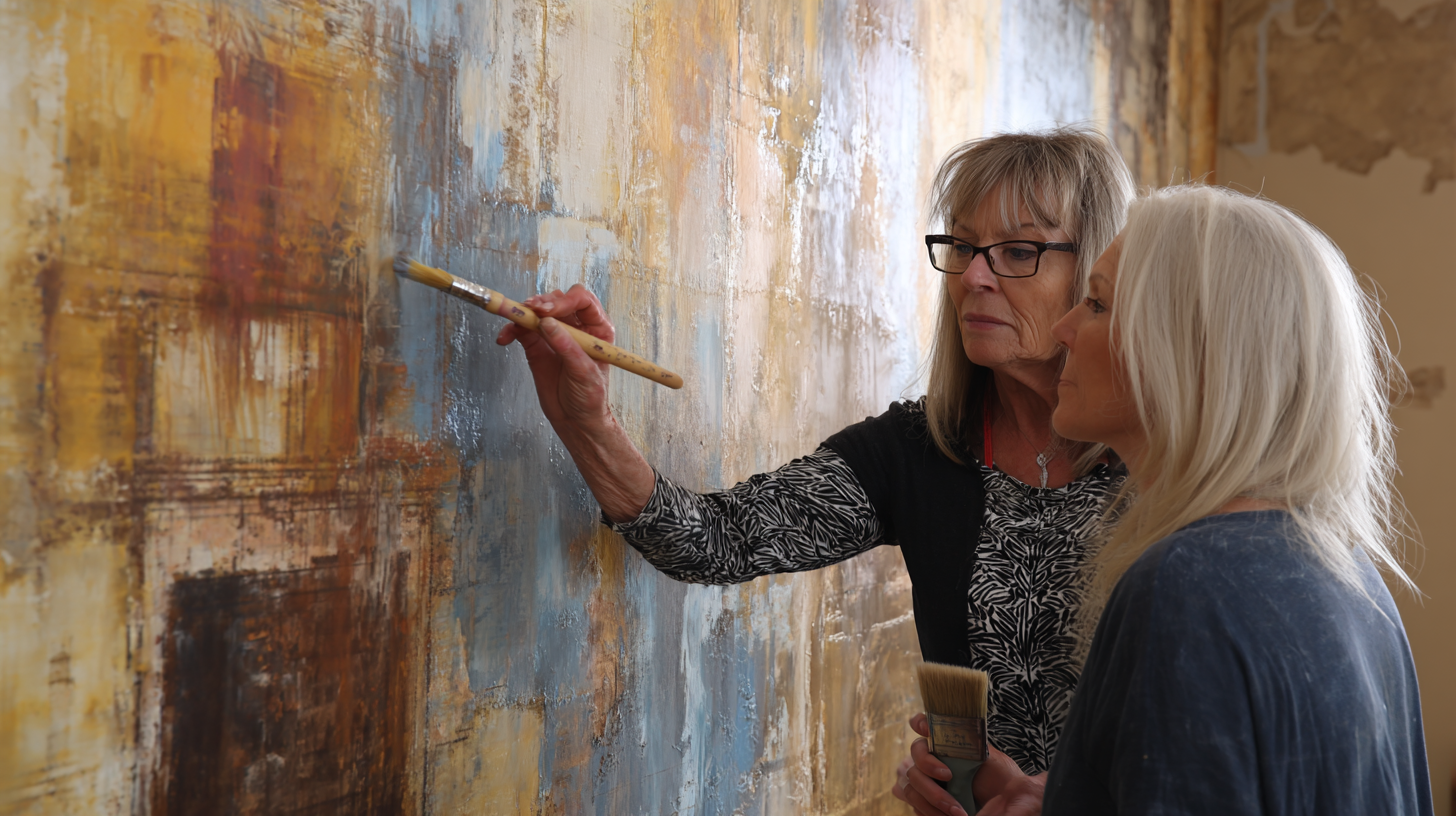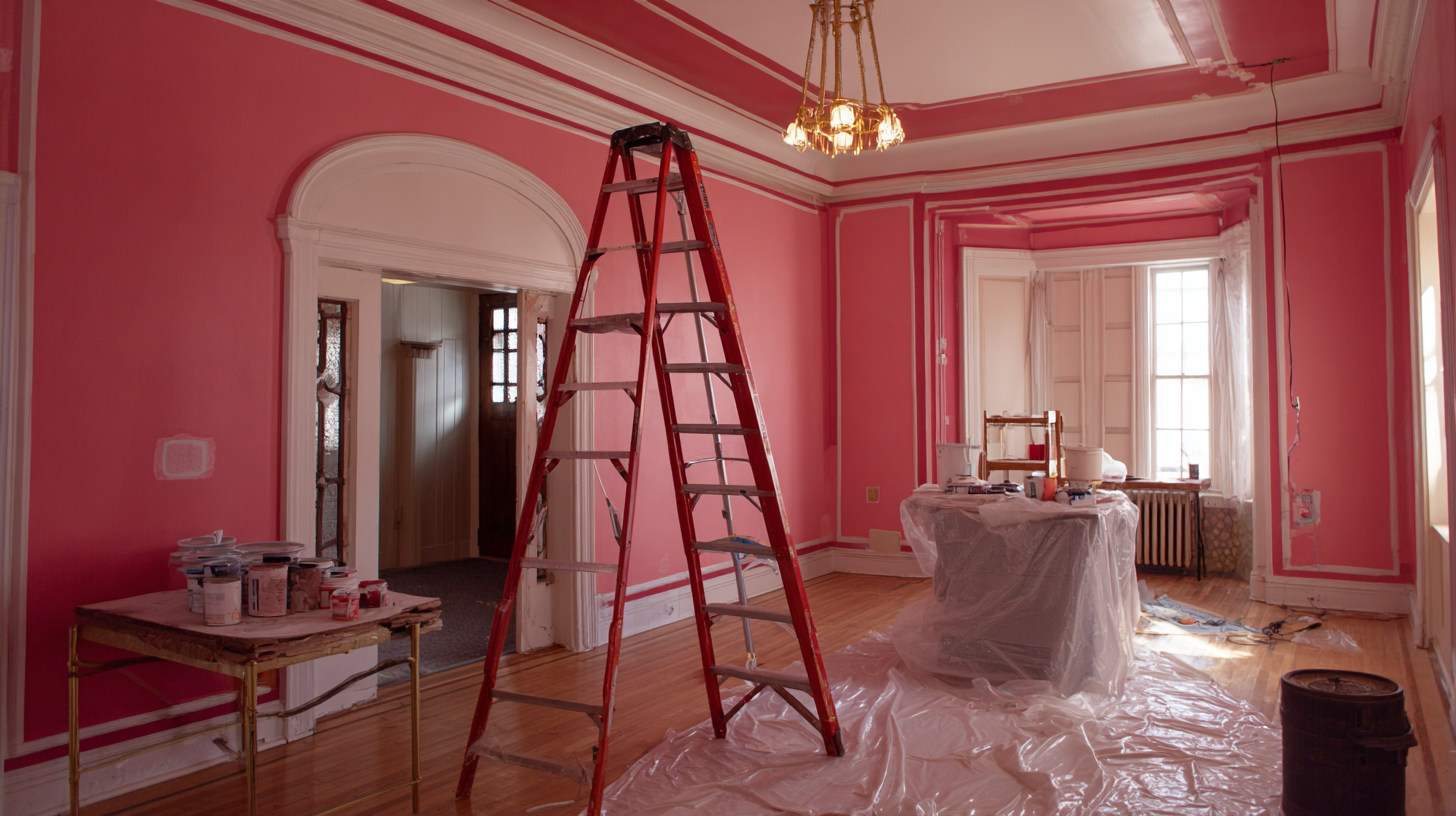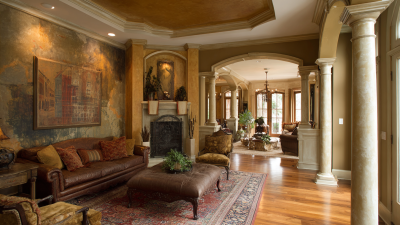Faux Painting techniques have gained significant traction in the interior design industry, recognized for their ability to transform ordinary spaces into visually stunning environments. According to a recent report by Allied Market Research, the global home décor market is projected to reach $664 billion by 2025, with a substantial portion of this growth attributed to creative painting techniques like faux finishes. These innovative methods not only enhance aesthetic appeal but also contribute to the emotional ambiance of spaces. As homeowners increasingly seek personalized design solutions that reflect their individual styles, faux painting emerges as a key strategy to achieve unique and sophisticated results. This article delves into the art and impact of faux painting, offering essential tips and insights to elevate your space through these transformative techniques.

Faux painting techniques have gained substantial popularity in interior design, allowing homeowners and decorators to create visually stunning effects without the extensive costs associated with traditional finishes. According to a recent report by the National Association of Home Builders, approximately 35% of homeowners are now opting for faux finishes when renovating their spaces. These techniques provide an affordable solution to achieve the look of more luxurious materials like marble or wood grain, giving an elegant touch to walls, furniture, and ceilings.
Understanding the different faux painting techniques is crucial for anyone looking to transform their space effectively. Techniques such as sponge painting, rag rolling, and marbling each offer unique aesthetics and can significantly alter a room's ambiance. A survey by the American Society of Interior Designers indicates that over 60% of designers advocate the use of faux effects to enhance creativity in home decor. By mastering these techniques, individuals can personalize their environments, making them not only aesthetically pleasing but also a reflection of their own style and personality.
| Technique | Description | Impact on Space | Common Uses |
|---|---|---|---|
| Rag Rolling | A technique using a rag to create soft, textured patterns. | Adds depth and warmth, perfect for cozy spaces. | Living rooms, bedrooms, and dining areas. |
| Sponging | Using a sponge to apply paint, creating a textured finish. | Often gives a soft, cloud-like effect; suitable for both casual and elegant settings. | Bathrooms, kitchens, and accent walls. |
| Stenciling | Applying paint through a stencil to create patterns or designs. | Allows for artistic expression and personal touch in a space. | Hallways, children's rooms, and feature walls. |
| Marbling | A technique that mimics the appearance of marble stone. | Brings luxury and elegance to interiors. | Formal dining areas, bathrooms, and entryways. |
| Color Washing | A technique using a thin glaze of paint to create a washed-out look. | Creates a soft, airy feel, making spaces feel larger. | Open spaces, living rooms, and hallways. |
Faux painting techniques can dramatically transform your space, but success hinges on having the right tools and materials. Begin with a high-quality paintbrush set, which includes both wide brushes for larger areas and smaller detail brushes for intricate designs. A good roller will cover larger surfaces efficiently; look for those with a thicker nap for textured effects. Don’t forget to invest in a palette or a painter’s tray to mix your paints easily.
Additionally, using the correct types of paint can enhance your faux painting results. Acrylic or latex paints are excellent choices due to their versatility and quick drying times. Be sure to have a primer on hand as well, as it prepares surfaces for painting and allows for better adhesion.
Tip: Always test your chosen combination of paints and techniques on a small area first to prevent any surprises. Tip: For a seamless finish, use a sponge or rag to apply techniques like sponging or rag-rolling, as these tools help create softer edges and intricate blends. Planning your design ahead of time on paper can also streamline the process and ensure a coherent look.
Faux painting techniques have gained immense popularity as homeowners seek fresh ways to transform their interiors without the expense of a complete remodel. According to a report by the Interior Design Society, faux finishes accounted for a significant share of the decorative painting market, estimated to reach $1.2 billion by 2025. This surge reflects the demand for personalized spaces, where individuals can express their unique tastes through various textures and designs. Faux techniques, such as sponging, rag rolling, and marbling, not only enhance visual interest but also provide practical solutions for concealing imperfections on walls.
When applying faux finishes, the process involves several essential steps. First, prepare the surface by cleaning and priming to ensure smooth adhesion of paint. Next, choose your base color and apply it evenly across the desired area. Once dry, select a complementary paint for the faux technique, and using tools such as brushes, sponges, or rags, begin to layer textures by dabbing or rolling the paint onto the surface. The key is to maintain a light touch and work in small sections to achieve a seamless blend. According to the National Guild of Professional Paperhangers, effective faux painting can increase property value by up to 15%, demonstrating not only the aesthetic appeal but also the financial benefits of these techniques.

Faux painting techniques offer a unique opportunity to transform any space in your home with creativity and flair. One popular approach is the use of sponging, where a base coat is applied, and then a contrasting color is dabbed onto the surface using a sponge. This method creates a soft, textured effect that can enhance walls, cabinetry, or furniture, adding depth and character to an otherwise plain surface. Another exciting technique is the rag rolling method, which involves rolling a rag over a base coat after a glaze is applied, resulting in a dynamic and visually appealing finish.

For those seeking to make a bold statement, consider incorporating trompe l'oeil into your decor. This artistic technique can give the illusion of three-dimensionality, helping to open up smaller spaces or add dramatic visuals to larger walls. Whether it's a faux window that reveals a scenic landscape or an ornate archway, trompe l'oeil invites a playful interaction with your environment. Additionally, metallic faux finishes can bring a touch of elegance and sophistication by mimicking the look of aged metals or gilded surfaces, perfect for accent walls or furniture pieces that deserve special attention.
When exploring faux painting techniques, it's essential to be aware of the common mistakes that can detract from the desired effect. One prevalent pitfall is the use of overly thick paint. Applying an excessive amount can create a clumpy appearance, which undermines the finesse that faux painting aims to achieve. Instead, using thinner layers allows for better blending and a more natural look, ensuring the texture and depth are effectively conveyed.
Another mistake to avoid is neglecting the importance of color coordination. Faux finishes should complement the overall color scheme of the room. For example, if you're considering a dreamy cloud effect, pairing it with contrasting, bold hues might lead to a jarring visual experience. Select colors that harmonize with your decor to enhance the space rather than overwhelm it. Attention to detail and thoughtful planning are key to successfully transforming your space with faux painting techniques, ensuring the final result feels cohesive and inviting.






